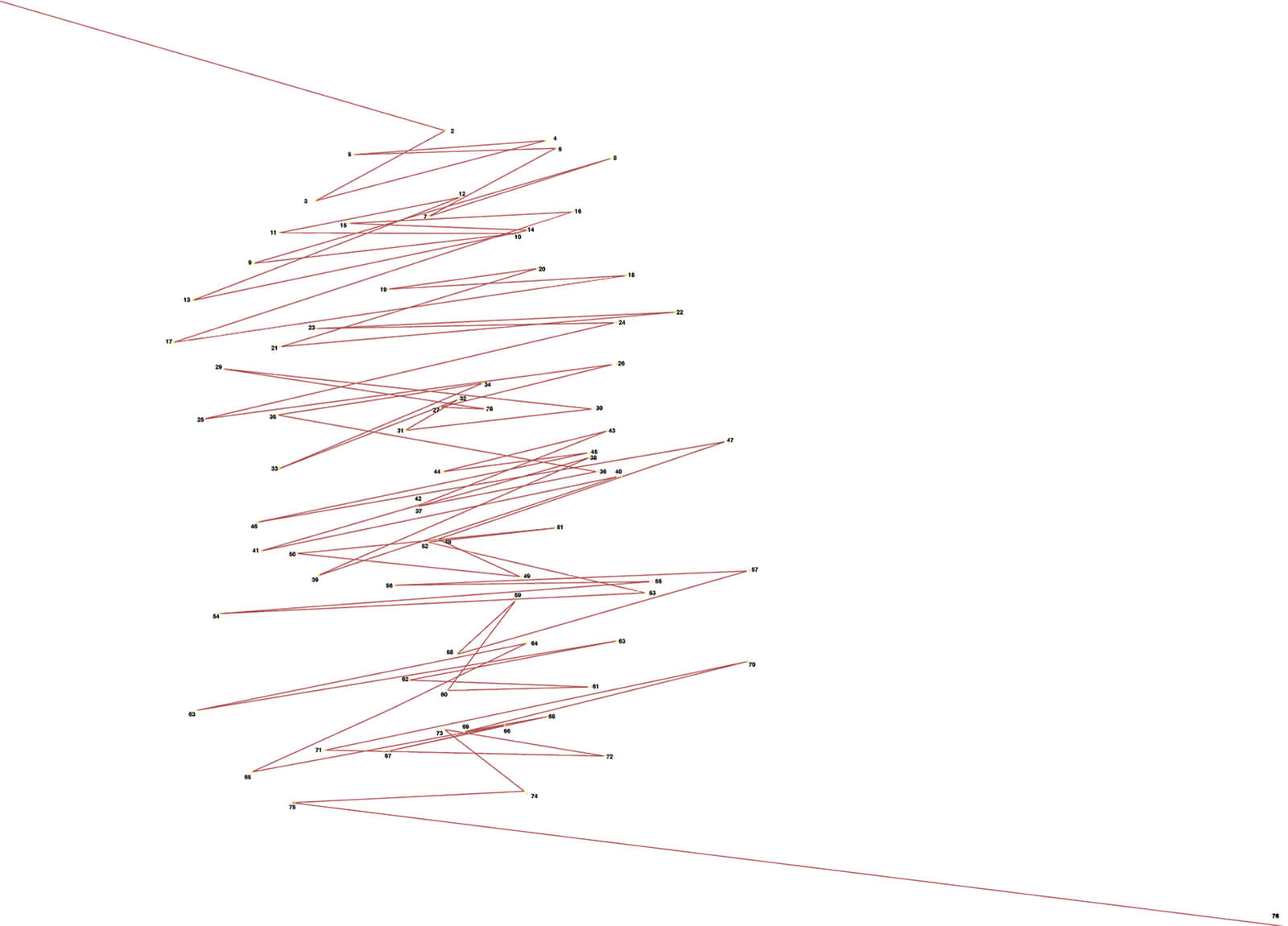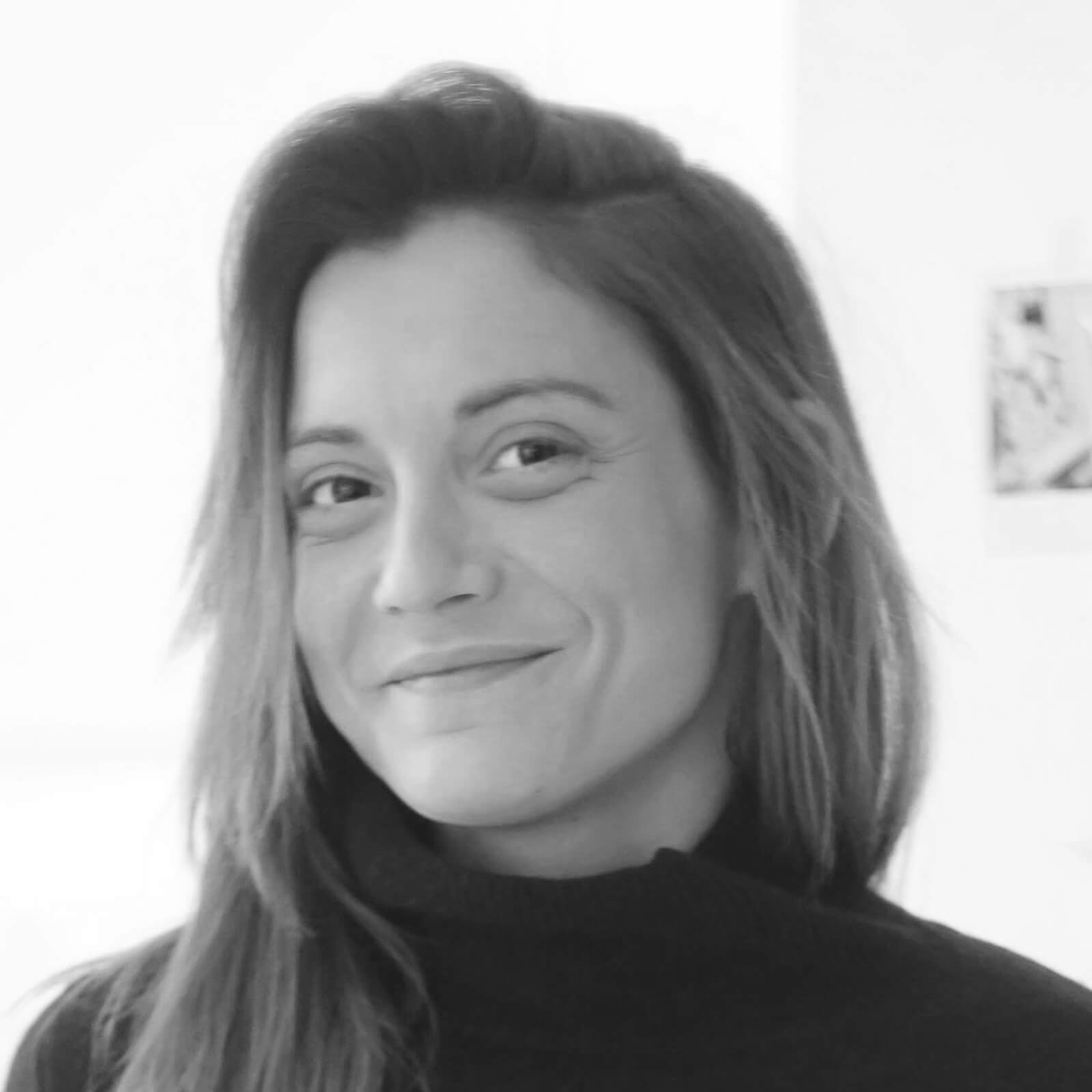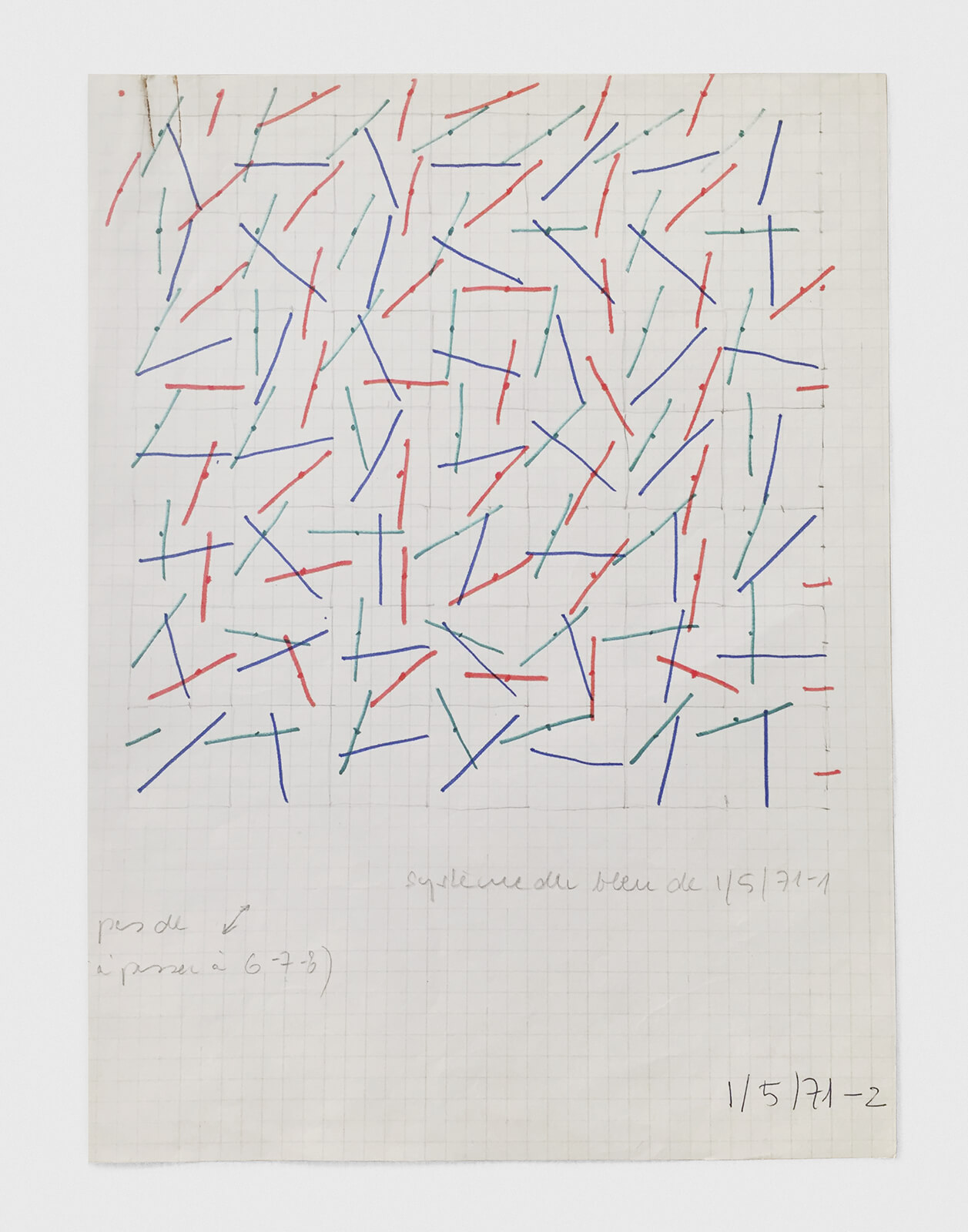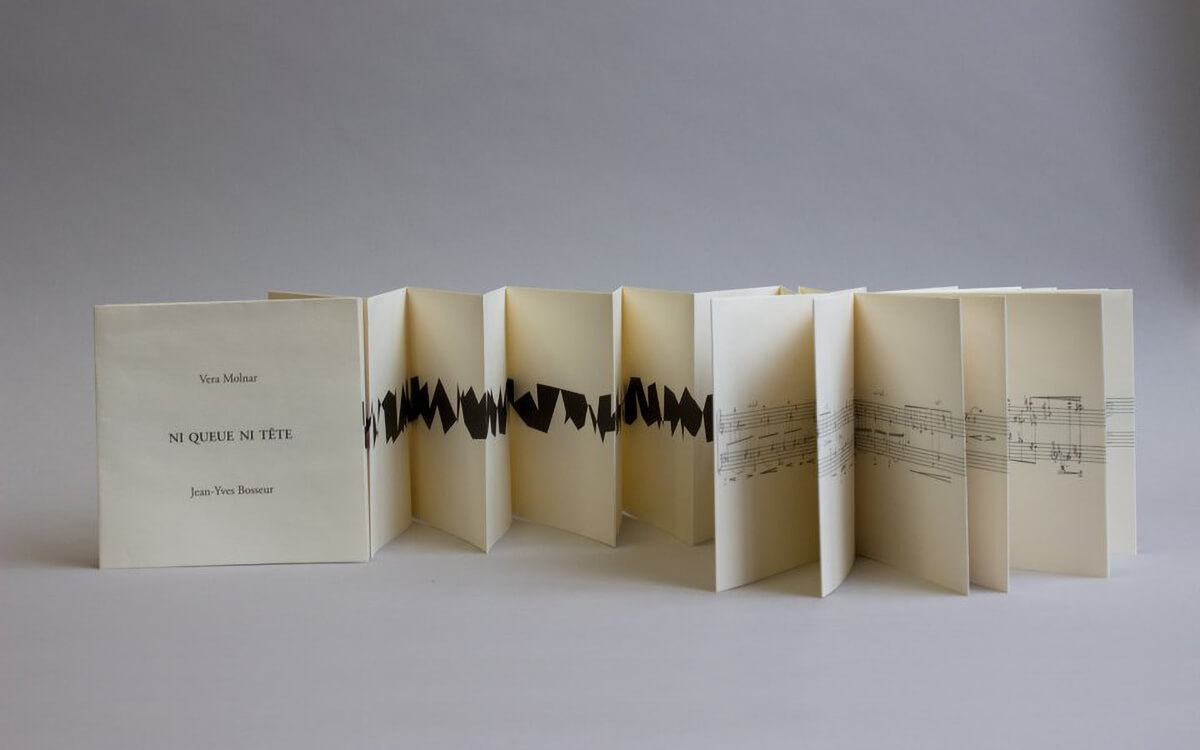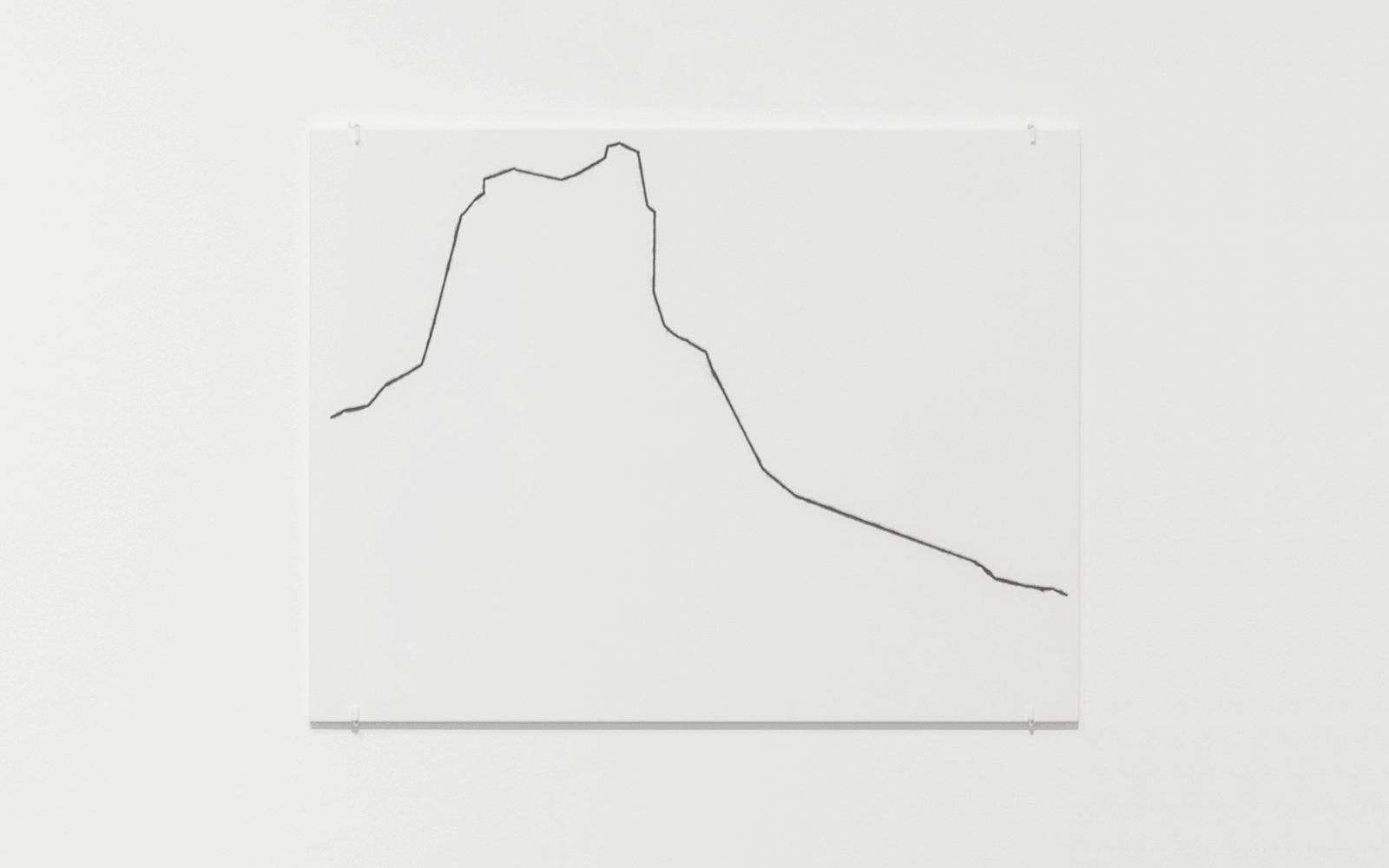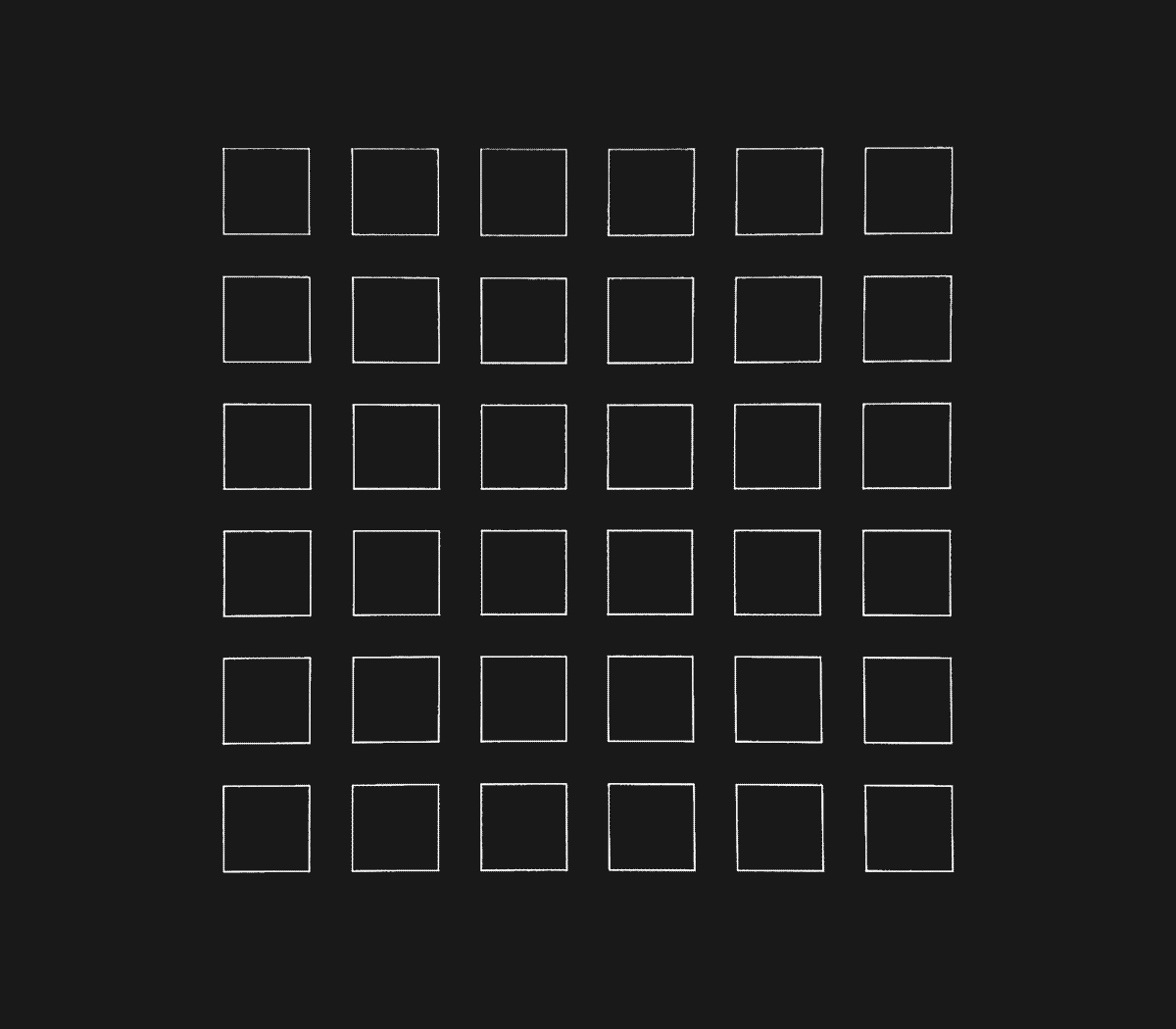Variations: “Weaving Variations” Curator David Familian Discusses the Otherworldiness of Vera Molnar’s Work
“I’m interested in the tension between pure randomness and something controlling it. Vera found that tension. Her work just looks like it’s from another planet.”
David Familian is the Beall Center’s Artistic Director and Curator. An artist and educator, he received his BFA from California Institute of the Arts in 1979 and his MFA from UCLA in 1986. For the past twenty years he taught studio art and critical theory in art schools including Otis College of Art and Design, Minneapolis College of Art and Design, and U.C. Irvine. Familian has curated and organized the majority of exhibitions at the Beall, including “Drawn from a score” in 2017 and now “Variations.”
Q: How did you decide on the exhibition title, “Variations?”
A: Vera Molnar has a unique range of ordering her images. One is linear, one is variations on a theme, and the other one is improvisation. By linear variations, I mean her serial works, like Hypertransformations. Variations on a theme is best demonstrated by her first series Inclinations and improvisation is best represented by Lettres de ma mère.
When I began to decide on the order of the works, I was oblivious that her works came out of the plotter in an order defined by code. Some of the works are very logical, like 36 squares, the one that starts with pure squares, then imperfect squares, and then it adds another level, another square on top of the squares, and then it distorts them and then it keeps doubling until it’s all dense. At the end, it’s totally distorted from the beginning, but you don’t notice it’s doing that until about two or three in.
I didn’t know she would disrupt the ordering process of outputting by removing image(s) from a sequence. Whether the reason is she didn’t like the image or she needed to expand the disorder embedded in the code is not important. It is her constant goal to balance the disorder and the order, and by imposing her combination of intuition and aesthetic choice on how a particular series should proceed and not relying on just the code, is one of many factors that add to the expressive power of her work.
The one series that I am really sorry I couldn’t get the complete version of was Désambulation entre ordre et chaos. If I ever do this show again, it would be my dream to have the full series. There’s a process behind it, but you can’t decipher it. So she plays with that. Sometimes you can decipher it, sometimes you can’t. Sometimes it seems like she’s messing with you [laughs]. I asked you once whether Molnar has a sense of humour like François Morellet, and you said ‘yes, absolutely.’ Then when I met her, she just had this smile! It was, like, wily. It gave me chills, that smile.
When I began to decide on the order of the works, I was oblivious that her works came out of the plotter in an order defined by code. Some of the works are very logical, like 36 squares, the one that starts with pure squares, then imperfect squares, and then it adds another level, another square on top of the squares, and then it distorts them and then it keeps doubling until it’s all dense. At the end, it’s totally distorted from the beginning, but you don’t notice it’s doing that until about two or three in.
I didn’t know she would disrupt the ordering process of outputting by removing image(s) from a sequence. Whether the reason is she didn’t like the image or she needed to expand the disorder embedded in the code is not important. It is her constant goal to balance the disorder and the order, and by imposing her combination of intuition and aesthetic choice on how a particular series should proceed and not relying on just the code, is one of many factors that add to the expressive power of her work.
The one series that I am really sorry I couldn’t get the complete version of was Désambulation entre ordre et chaos. If I ever do this show again, it would be my dream to have the full series. There’s a process behind it, but you can’t decipher it. So she plays with that. Sometimes you can decipher it, sometimes you can’t. Sometimes it seems like she’s messing with you [laughs]. I asked you once whether Molnar has a sense of humour like François Morellet, and you said ‘yes, absolutely.’ Then when I met her, she just had this smile! It was, like, wily. It gave me chills, that smile.
“Even though the line was drawn by computer, something she did—in the manipulation of the code—made it look like drawing, not computation. I don’t really know how to put it into words.”
Q: Totally. She’s really funny. When you meet her you realize you just can’t take the work at face value. Why do you think Désambulation entre ordre et chaos resonated with you so strongly?
A: I think the reason why I’m drawn to the series is that I was trained in photography in the ’70s, when there were all these photo books from artists like Ralph Gibson, Nathan Lyons, Robert Frank, and Diane Arbus. Everything was about the book as a form of series, about connecting images together. It actually goes back to my training as an artist. My model, as a curator, is what Jeffrey Shaw and Peter Weibel did as artist-curators.
Q: What sparked your interest in doing a Molnar solo show?
A: I’m interested in the tension between pure randomness and something controlling it. I first articulated this for the show “Drawn from a score” at the Beall in 2017, which Vera was included in—she had a whole wall. I realized as I was looking at the show that she found that tension. Her work just looks like it’s from another planet. Even though the line was drawn by computer, something she did—in the manipulation of the code—made it look like drawing, not computation. I don’t really know how to put it into words. She’s not trying to be painterly, like Harold Cohen. But there’s something about it. Even when it’s drawn with the plotter, it looks like drawing. That’s why I wanted to do a one-person show.
This fall, I am co-curating an exhibition called “Computational Poetics” with Hannah B. Higgins—it deals with text generated by a variety of computational processes. I am also working on an exhibition on complex systems, which are orderly, but not predictable. That will be part of the Getty Pacific Standard Time 2024 (PST) program.
This fall, I am co-curating an exhibition called “Computational Poetics” with Hannah B. Higgins—it deals with text generated by a variety of computational processes. I am also working on an exhibition on complex systems, which are orderly, but not predictable. That will be part of the Getty Pacific Standard Time 2024 (PST) program.
Vera Molnar, Descente (2014), score
Unable to obtain the score for the nail-and-thread installation commissioned for Molnar’s 2014 retrospective at the Museum für Konkrete Kunst (MKK) in Ingoldstadt, Germany, David Familian created his own based on the documentation.
Unable to obtain the score for the nail-and-thread installation commissioned for Molnar’s 2014 retrospective at the Museum für Konkrete Kunst (MKK) in Ingoldstadt, Germany, David Familian created his own based on the documentation.
Q: Can you tell me about Déscente, the wall ‘drawing’ made with string? The photos look amazing and I can’t wait to see it in person. I remember you initially wanted a new commission based on a random walk program, but it didn’t come together amidst the pandemic and all.
A: I ended up writing to the Museum für Konkrete Kunst (MKK) in Ingolstadt, Germany, where Vera had a retrospective in 2014. I asked MKK’s collection specialist Marie-Luise Heske if there was a score and she said no, but she sent me all the documentation from that show. So I put the images in Adobe Illustrator and found 73 points where I could put the nails and figured out a numbering system—that took me two or three days. But now there is a score for the work. We should get her to sign off on it so another institution can use it.
Q: I remember asking Vera on your behalf for permission to alter the work slightly to fit the wall in the exhibition. I didn’t realize you basically reverse-engineered it from installation photos! That’s some pandemic resourcefulness—it’s also quite media archaeological. What was your process, exactly?
A: A lot of times it was like going into a maze that you can’t get out of. There were maybe ten different ways of doing it. But I just followed a logic: what would happen as I connected the dots? After a while I would hit a dead end and it no longer looked like the image I was supplied. And it’s interesting how the yarn of Déscente connects to the yarn in her Montagne Saint-Victoire pieces. Ultimately how the works look next to each other takes precedence over everything. In terms of organizing the show, chronology is less important than how it flows visually.
Condensed and edited version of a conversation that took place on Aug 2, 2022
Condensed and edited version of a conversation that took place on Aug 2, 2022
Variations
Weaving VariationsExplore more of "Variations:"
→ HOLO.mg/stream/
→ HOLO.mg/vera-molnar-weaving-variations/

